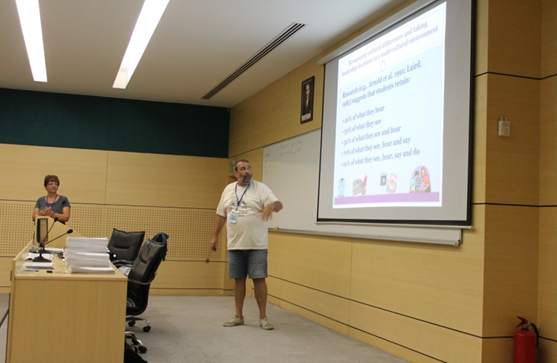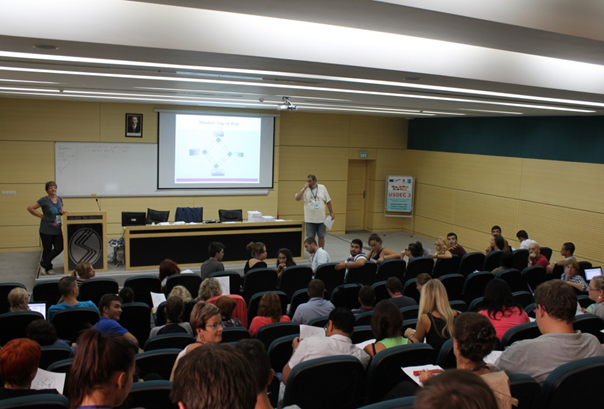Overall title of the combined Danish lecture/workshop: “Competences in active and informed citizenships through multilocal approaches in a Storyline frame”
The second day of the project starts with the Danish presentation.
Title of part one: To create joint values and culture in a new society
Talking about citizenship as constituted by three elements: rights and duties, identity and belonging and participation we tried to stress that the construction of communities or societies takes an outset in or is based upon local relations, for example as in the family or in the classroom. In these places you can participate, you have rights and duties and you establish your identity here. In that way we all establish our identities in multiple local places getting a multi-local identity. So the focus in this project is to try to create new communities constituted by a diversity of multi-local people.
With this outset we started a Storyline project (which is a teaching method, where the teaching is arranged around a story placed in a specific time and a place and with some imaginary persons/creatures playing a role and some incidents happening). In our case the scene was set in 2034 where the students were survivors after a huge natural catastrophe (flood) which had placed them on an island in the Pacific Ocean. The students were placed in heterogeneous groups with 5-7 participants varying on gender and nationality.
In this remote place the students (inhabitants of this island) should answer the first storyline-question: Who are you and what is your cultural heritage? They should describe themselves 20 years from now. On one hand from a more visible perspective (as a description of job, family, house etc.). On the other hand from a more invisible perspective (description of personal heroes, norms, values etc.).
Then the storyline was shortly interrupted with a theoretical lecture about the concept of Culture and the difference between personal and national/societal culture. Based primarily on the thoughts of Gert Hofstede culture was conceptualized as an onion with outer and inner layers: from symbols, over heroes, norms and rituals to – in the center – values.
In the last task that day the groups should answer the storyline-question: How should our new community be like?
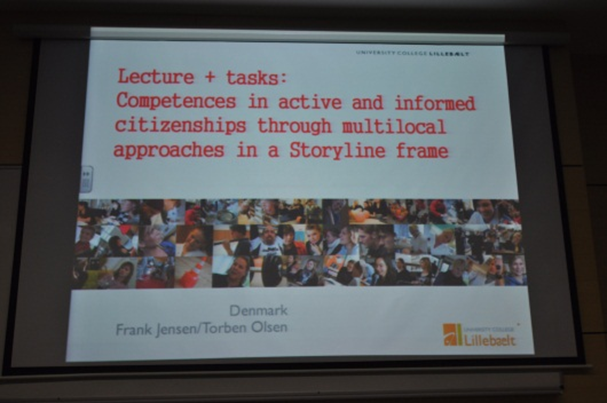
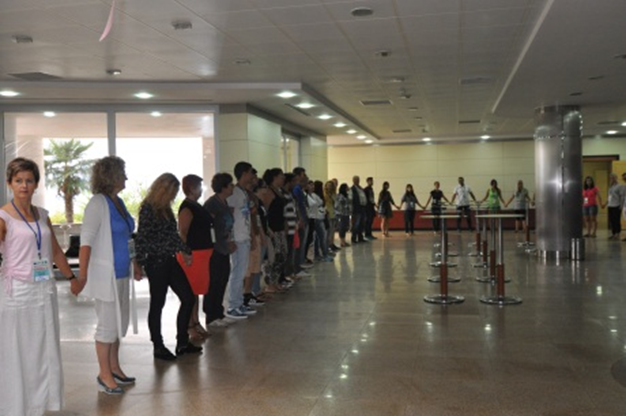
The beginning of the day ”Banana – Mango”
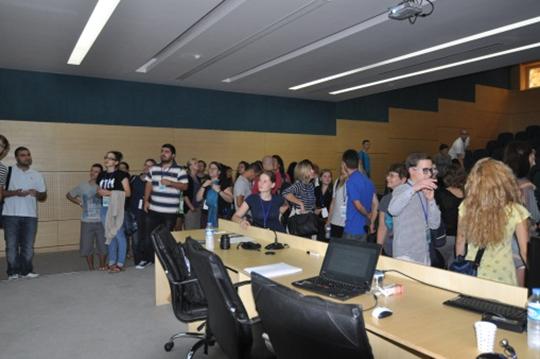
Looking for the new group for the days work
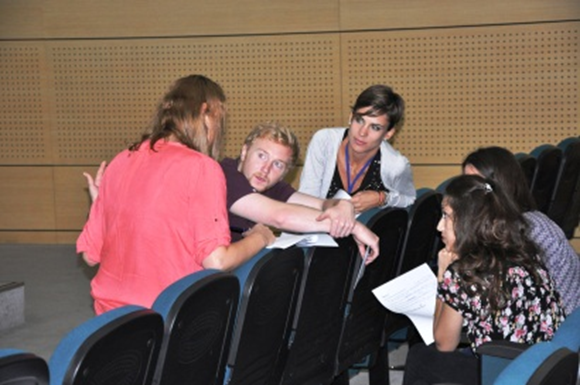
Discussions in groups were intensive
In the second part of the day ,the lecture from Greece about “Recognizing the cultural differences and taking leadership decisions in a multi-cultural environment” was conducted. As in the modern world more and more people from different cultural backgrounds find themselves living and working side by side, it has become more than evident that being aware of the meaning and context of culture as well as its various dimensions is essential in order for people to communicate effectively, coexist in harmony and achieve maximum performance in business. Bearing in mind the above, we examine the meaning and content of culture, starting with the relevant research that has been conducted so far and which has been implemented in business and organization management but also in the science of Anthropology, thus leading to the construction of various cross-cultural models. In a globalized environment, being aware of these models contributes greatly to the taking of desicions in such a manner so that managers can be effective in their implementation and leaders can make decisions wisely. The application of this knowledge relies on the organizational culture of each organization or business as well as the managerial or leadership skills and competences of the managers and leaders.
